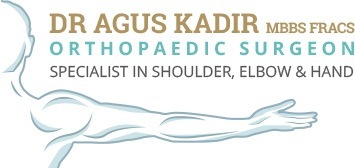Normal Anatomy of the Elbow
The arm in the human body is made up of three bones that join together to form a hinge joint called the elbow. The upper arm bone or humerus connects from the shoulder to the elbow forming the top of the hinge joint. The lower arm or forearm consists of two bones, the radius and the ulna. These bones connect the wrist to the elbow forming the bottom portion of the hinge joint.
The elbow joint is actually three separate joints surrounded by a watertight sac called a joint capsule. This capsule surrounds the elbow joint and contains lubricating fluid called synovial fluid.
- Humerus
- Ulna
- Radius
The three joints of the elbow include:
- Ulnohumeral joint is where movement between the ulna and humerus occurs.
- Radiohumeral joint is where movement between the radius and humerus occurs.
- Proximal radioulnar joint is where movement between the radius and ulna occurs.
Our elbow is held in place and supported by various soft tissues.
Cartilage
Shiny and smooth, cartilage allows smooth movement where two bones come in contact with each other.
Tendons
Tendons are soft tissue that connects muscles to bones to provide support.
- Biceps Tendon
This tendon attaches the biceps muscle on the front of the arm to the radius allowing suppination, rotation of the elbow. - Triceps Tendon
This tendon attaches the triceps muscle on the back of the arm to the ulna bone allowing the elbow to straighten. - Lateral Epicondyle
This bony prominence located just above the elbow on the outside is where the forearm muscles that straighten the fingers and wrist come together in one tendon to attach to the humerus. - Medial Epicondyle
This bony prominence located just above the elbow on the inside is where the muscles that bend the fingers and wrist come together in one tendon to attach to the humerus.
Ligaments
Ligaments are strong rope like tissue that connects bones to other bones and help hold tendons in place providing stability to joints. Ligaments around the elbow join to form a watertight sac called a joint capsule. This capsule surrounds the elbow joint and contains lubricating fluid called synovial fluid.
There are four main ligaments in the elbow.
- Medial collateral ligament
Located on the inside of the elbow this ligament connects the ulna to the humerus. - Lateral collateral ligament
Located on the outside of the elbow this ligament connects the radius to the humerus. - Annular ligament
This ligament forms a ring around the head of the radius bone, holding it tight against the ulna. - Quadrate ligament
This ligament also connects the radius to the ulna.
Muscles
Muscles are fibrous tissue capable of contracting to cause body movement.
- Biceps
This is the large muscle on the front of the arm above the elbow that allows elbow suppination, rotation of the elbow. - Triceps
This is the large muscle on the back of the arm above the elbow enabling elbow extension, straightening of the elbow. - Brachialis
This muscle is the primary elbow flexor enabling bending of the elbow. It is located at the distal end of the humerus. - Wrist extensors
These muscles of the forearm attach to the lateral epicondyle enabling extension of the hand and wrist. - Wrist flexors
These muscles of the forearm attach to the medial epicondyle enabling flexion of the hand and wrist.
Nerves
Nerves are responsible for carrying signals back and forth from the brain to muscles in our body, enabling movement and sensation such as touch, pain, and hot or cold.
The three main nerves of the arm are:
- Radial nerve
- Ulnar nerve
- Median nerve
All three nerves begin at the shoulder and travel down the arm across the elbow.
Blood Vessels
The main vessel of the arm is the brachial artery. This artery travels across the inside of the elbow at the bend and then splits into two branches below the elbow.
These branches are:
Radial Artery: The radial artery is the largest artery supplying the hand and wrist area. Traveling across the front of the wrist, nearest the thumb, it is this artery that is palpated when a pulse is counted at the wrist.
Ulnar Artery: The ulnar artery travels next to the ulnar nerve through Guyon’s canal in the wrist. It supplies blood flow to the front of the hand, fingers and thumb.
Bursae
Bursae are small fluid filled sacs that decrease friction between tendons and bone or skin. Bursae contain special cells called synovial cells that secrete a lubricating fluid. When this fluid becomes infected, a common painful condition known as Bursitis can develop.

 Menu
Menu






